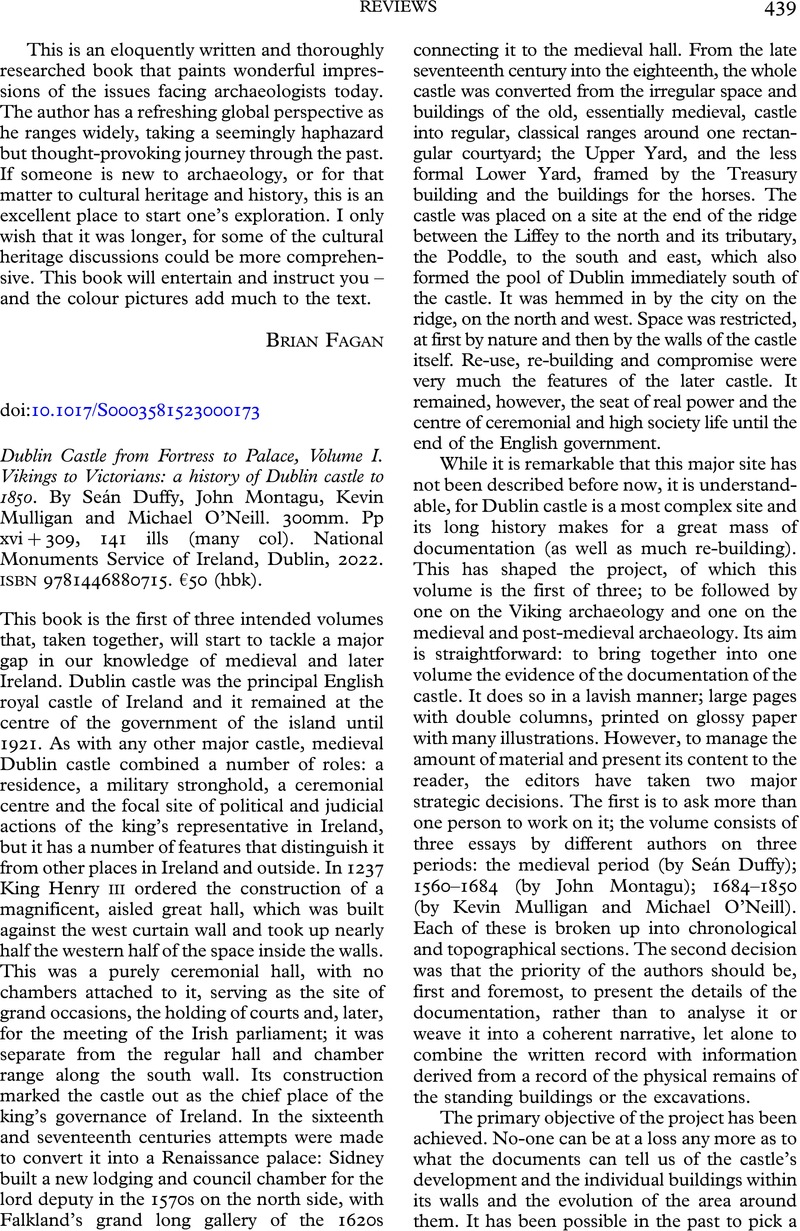No CrossRef data available.
Article contents
Dublin Castle from Fortress to Palace, Volume I. Vikings to Victorians: a history of Dublin castle to 1850. By Seán Duffy, John Montagu, Kevin Mulligan and Michael O’Neill . 300mm. Pp xvi + 309, 141 ills (many col). National Monuments Service of Ireland, Dublin, 2022. isbn 9781446880715. €50 (hbk).
Review products
Dublin Castle from Fortress to Palace, Volume I. Vikings to Victorians: a history of Dublin castle to 1850. By Seán Duffy, John Montagu, Kevin Mulligan and Michael O’Neill . 300mm. Pp xvi + 309, 141 ills (many col). National Monuments Service of Ireland, Dublin, 2022. isbn 9781446880715. €50 (hbk).
Published online by Cambridge University Press: 29 June 2023
Abstract
An abstract is not available for this content so a preview has been provided. Please use the Get access link above for information on how to access this content.

- Type
- Reviews
- Information
- Copyright
- © The Author(s), 2023. Published by Cambridge University Press on behalf of The Society of Antiquaries of London


